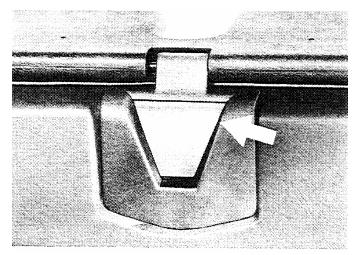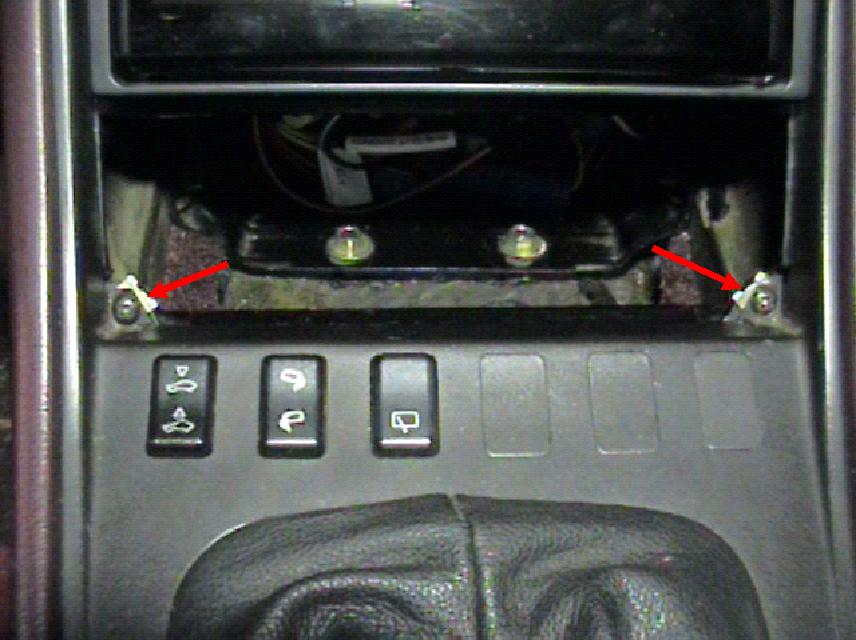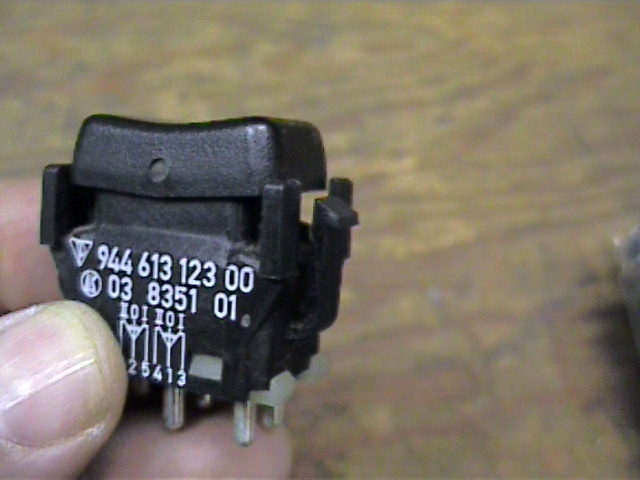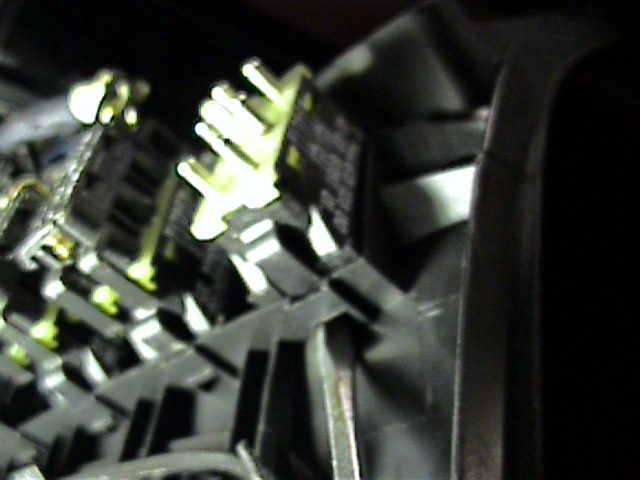Acrobat Printable Version
|
ELECT-18, Sunroof Component Testing
|
Table of Contents
Introduction
There is a small micro-switch located beneath a triangular shaped cover between the sun visors. This micro-switch serves to stop the sunroof in the fully raised position on early 944 sunroof systems (1982 - February 1986). The mirco-switch is also present on later sunroof systems and functions as a backup to Limit Switch III. This micro-switch is one of the more common failure items on the sunroof. It will prevent the sunroof from operating electrically in the open direction. This means that it can prevent the sunroof from moving from the locked position to the open position OR from the released position to the locked position. However, it should NOT prevent the roof from operating in the closed direction.
Removing and Replacing the Micro-Switch



For the sunroof to operate in the open direction, the micro-switch between the sun visors must be closed and must remain closed. If the micro-switch is open, fails electrically (open), or has a broken wire in the circuit, the sunroof will not open.

The sunroof micro-switch is operated by a tab on the front of the sunroof hatch. Sometimes that tab can become bent and will not be high enough to depress the micro-switch operator enough to close the switch. If the micro-switch appears to be functioning normally, check it again with the roof installed and closed. If you press upward on the tab at the front of the sunroof and you hear and audible click from the micro-switch, the tab is not bent enough to keep the micro-switch closed. Remove the roof and bent the tab upward slightly until it will close the micro-switch with the roof installed and closed.






On early cars the main sunroof relay checks can be performed on in the back of the switch with it connected to the harness. On the later cars, the checks are performed on the disconnected plug for the sunroof switch.



There is one remaining check on the main sunroof relay performance. This has to do with the function of the lifting arms to raise from the retracted position to the locked position if the sunroof is installed and the car's speed is sensed to be greater than 5 km/h (3 mph). This can be performed by checking for approximately 12 VDC at terminal 5 of the console switch plug with the car rolling at greater than the required speed. On early 944s (pre-1985.5) this can be done by raising the front of the car and spinning the left front wheel. The 5 km/h is sensed by a hall sensor on the left front wheel. On late 944s, the speed signal comes from the electronic speedometer signal from the hall sensor mounted in the transaxle. So, the car has to be driven or the rear of the car has to be raised and the transaxle rotated to check the voltage.
| 1-4 <1 ohm 1-2 ∞ |
1-4 ∞ 1-2 <1 ohm |
1-4 ∞ 1-2 <1 ohm |
||||
| 1-4 ∞ 1-2 <1 ohm |
1-4 ∞ 1-2 <1 ohm |
1-4 <1 ohm 1-2 ∞ |
||||
| 1-4 <1 ohm 1-2 ∞ |
1-4 <1 ohm 1-2 ∞ |
1-4 ∞ 1-2 <1 ohm |
||||
| 2-3 <1 ohm 1-3 ∞ |
2-3 ∞ 1-3 <1 ohm |
|||
| 2-3 ∞ 1-3 <1 ohm |
2-3 ∞ 1-3 <1 ohm |
|||
| 2-3 <1 ohm 1-3 ∞ |
2-3 <1 ohm 1-3 ∞ |
|||
Removing the Late Sunroof Console Switch for Testing / Replacement








The pictures shown for this section are for an early 944 sunroof system console switch. However, the function and switch terminal labelling is identical for the late model sunroof system console switch.


When the sunroof switch is depressed in the BACK (A) direction, the resistance readings between terminals 2-5 and terminals 1-3 on the console switch should be less than 1 ohm. When the switch is depressed it the FORWARD (B) direction, the resistance readings between terminals 2-6 and terminals 2-4 should be less than 1 ohm. If the proper readings are obtained, the sunroof switch is good.
Directional Relay Testing
If one or both of the sunroof directional relays is bad, the sunroof will typically not operate in any direction. However, it is possible for the sunroof to operate in one direction and not the other with one bad directional relay. Therefore, when testing the directional relays, it's a good idea to test both relays at the same time.
The directional relay terminals should be clearly labelled on the bottom of the relay.
While checking the directional relays, it's also a good idea to check that the voltage supply to the relay terminal block is good and that the wiring connections from the relay block to ground are good. These insure checks ensure that the relay will function properly provided it gets a signal from the sunroof switch to actuate.
On early 944 sunroof systems, install the ignition key into the ignition (not required on later sunroof cars). With a multimeter, you should read 12 VDC on both terminal 87s to ground and less than 1 ohm resistance between the 86 terminals to ground and 87a terminals to ground. If the voltage reading on the 87 terminals is bad, check the following:

